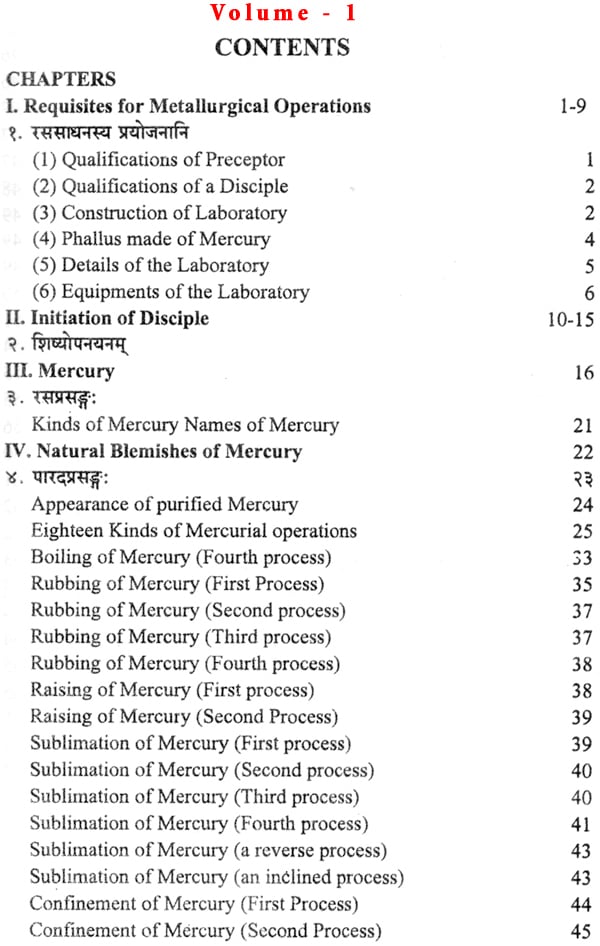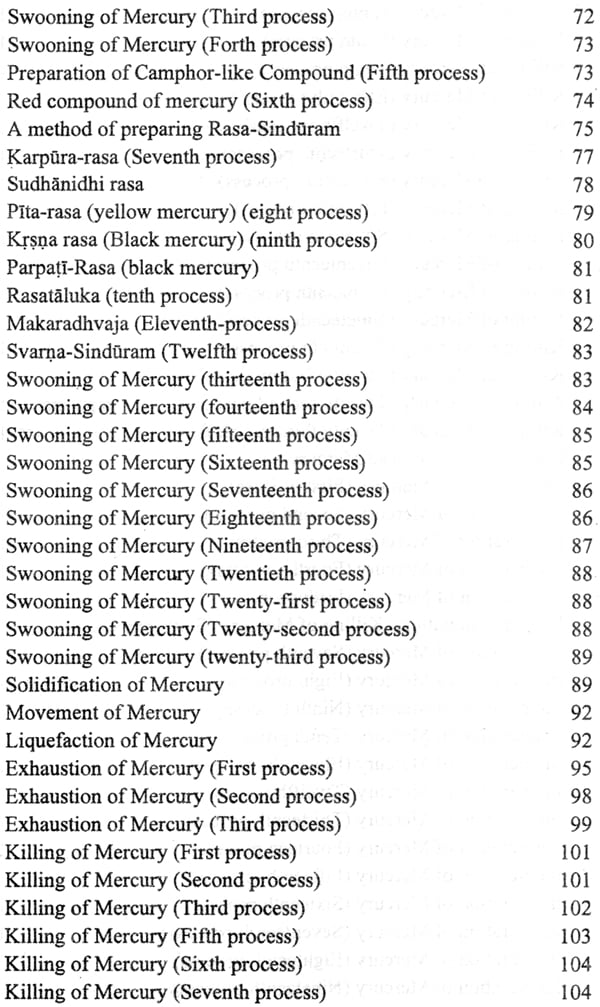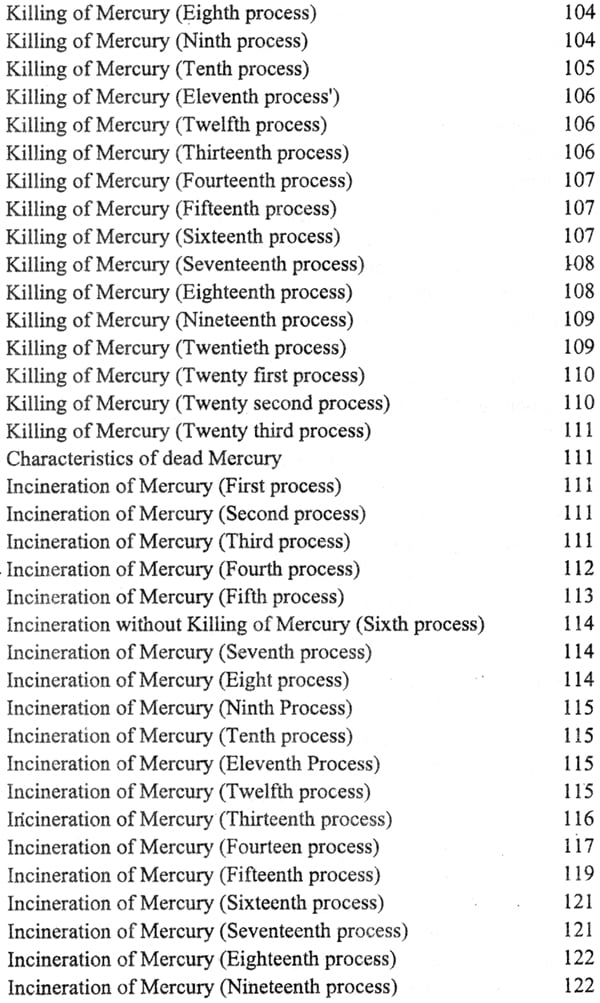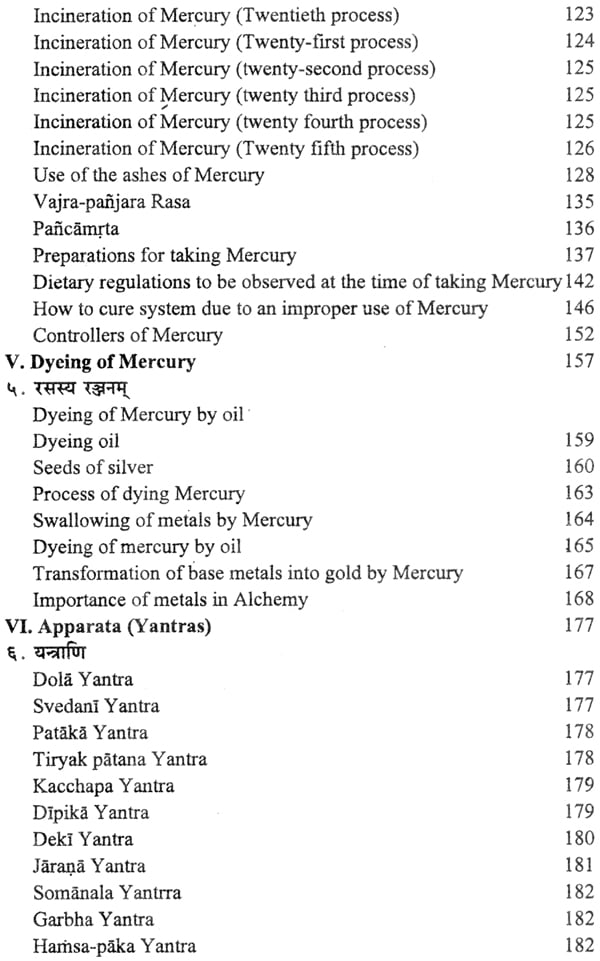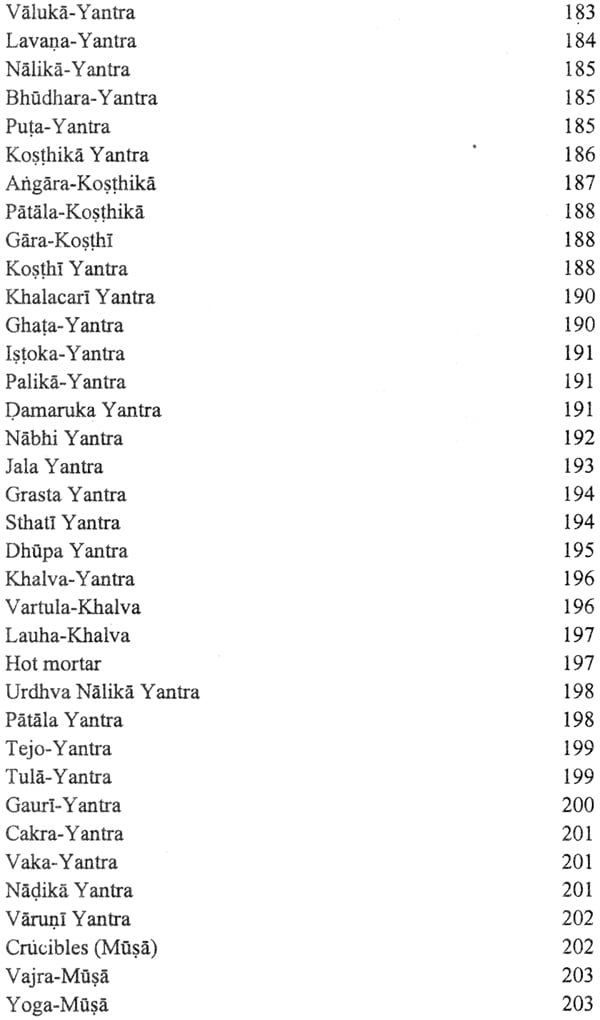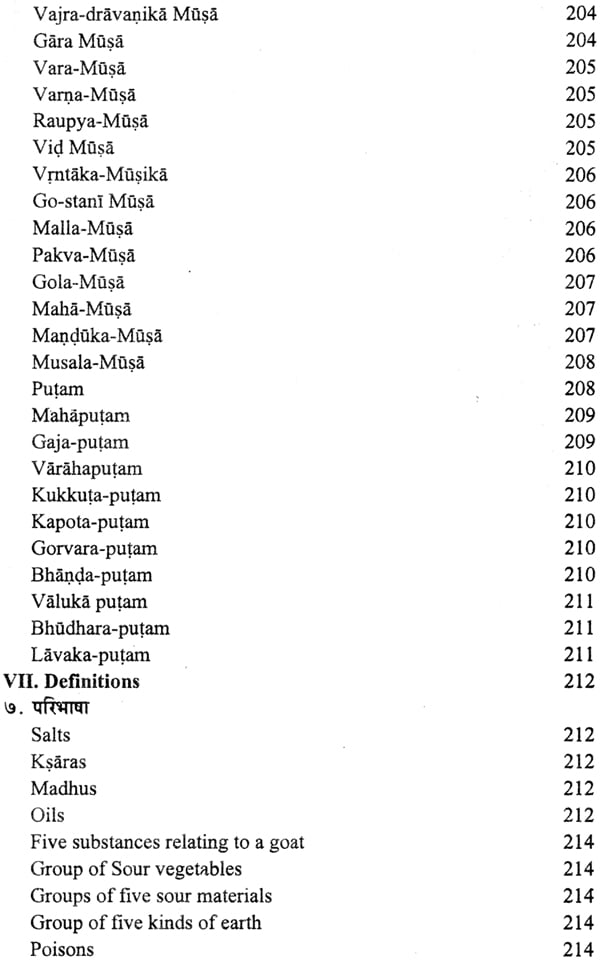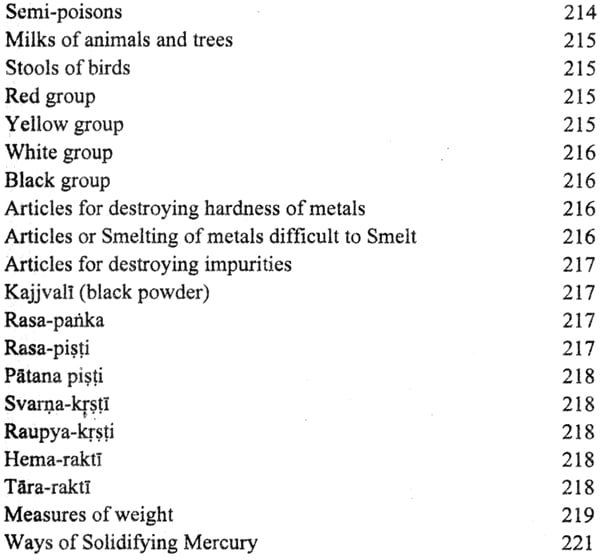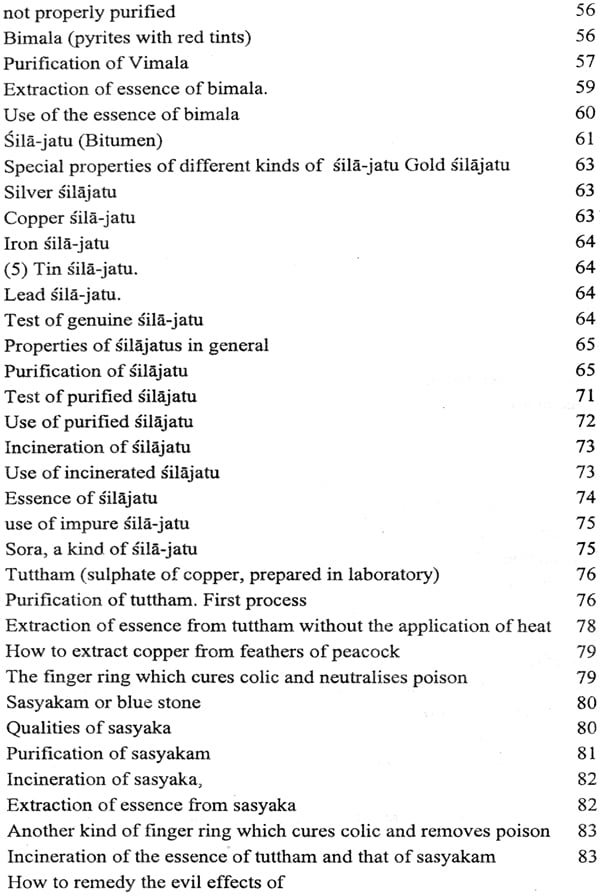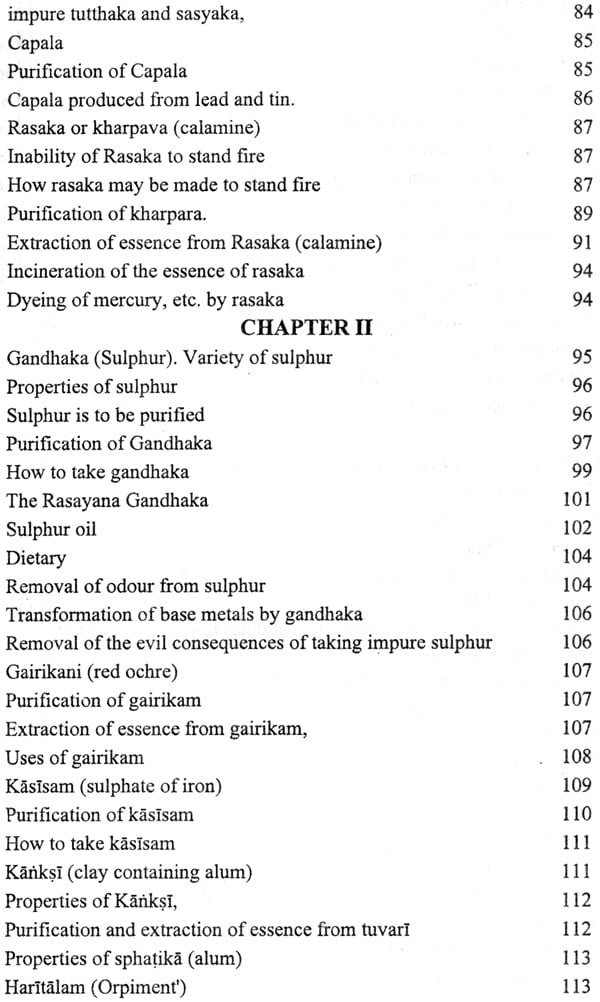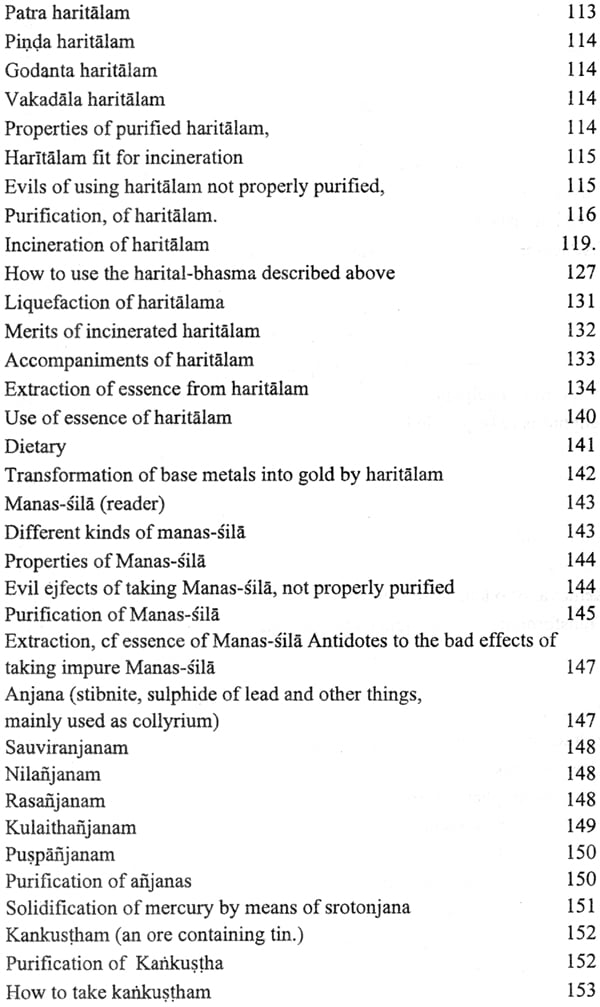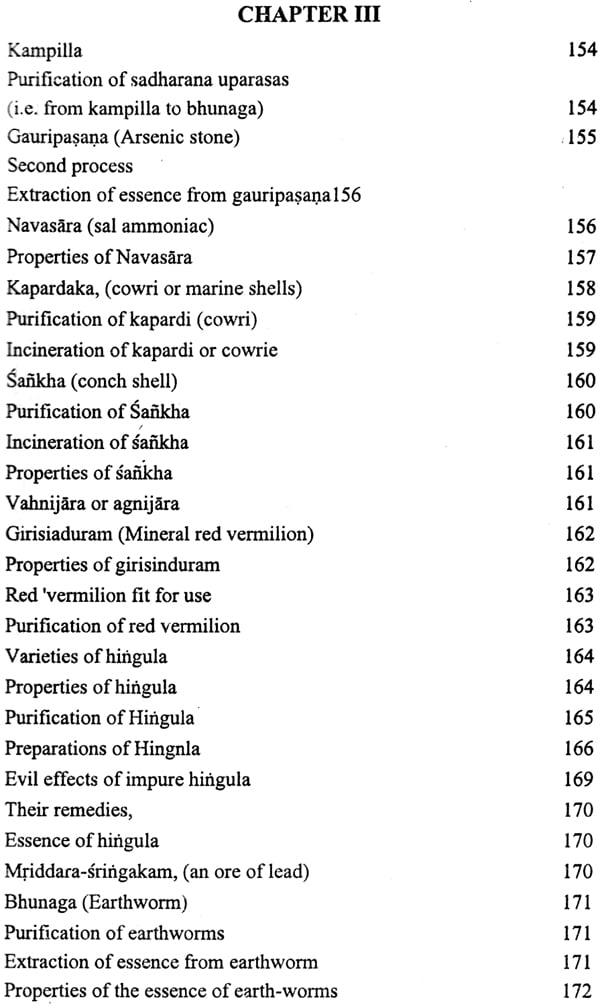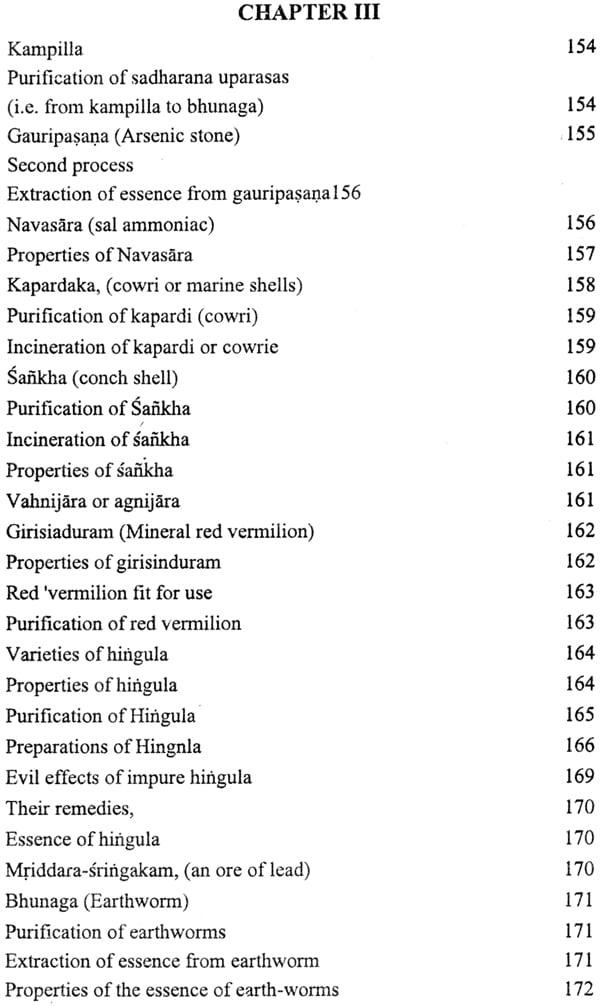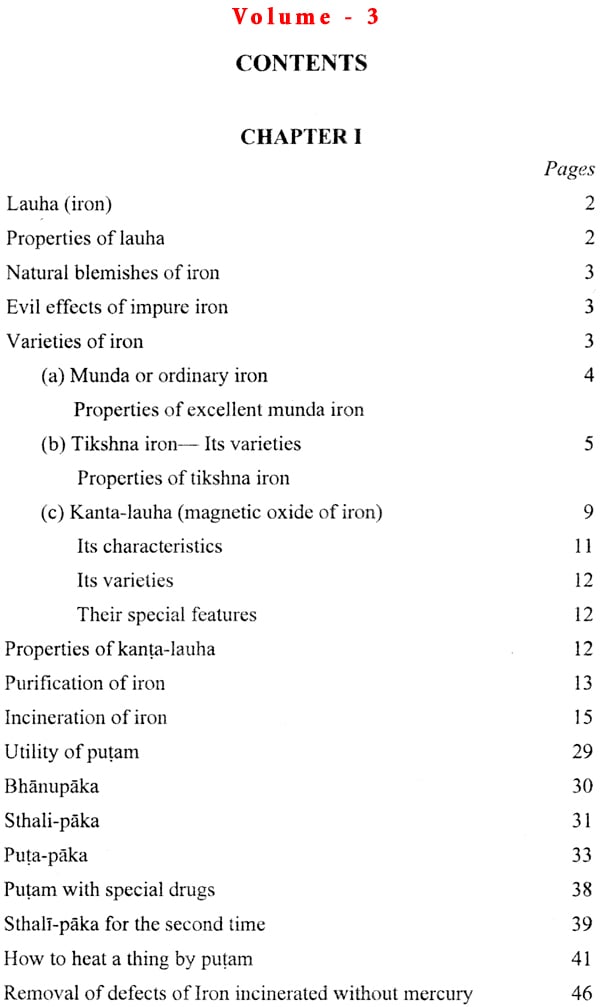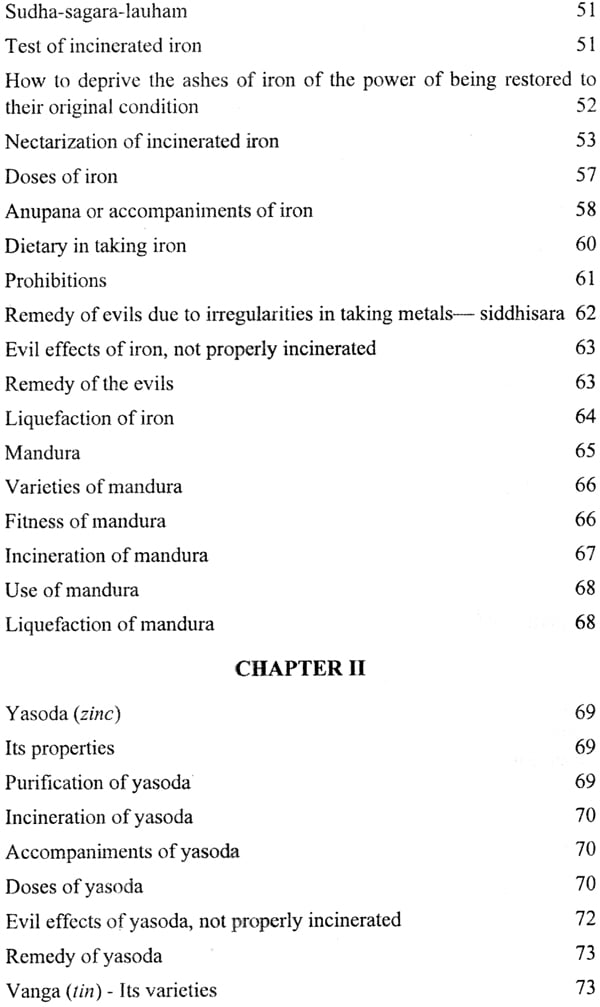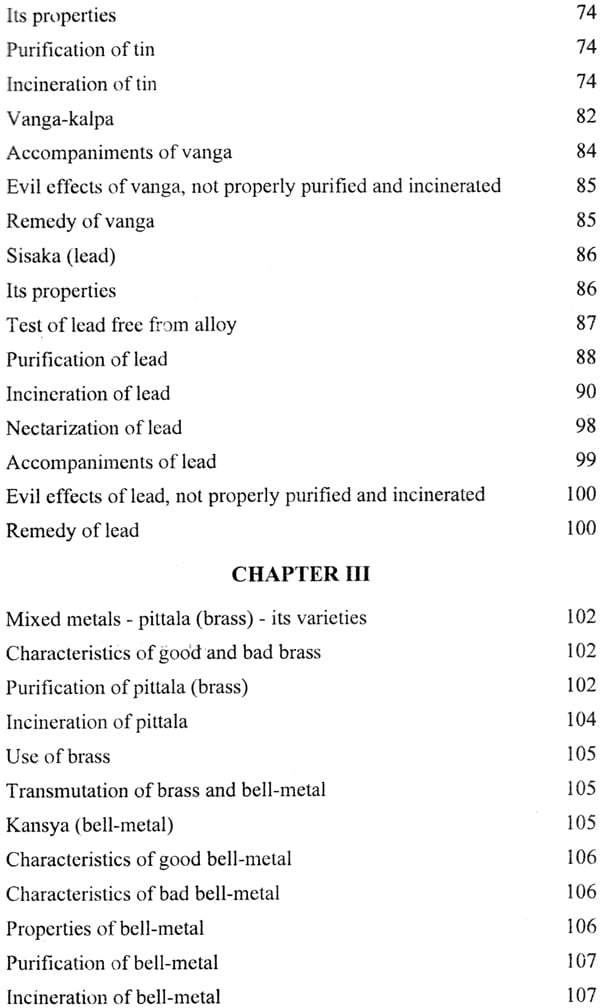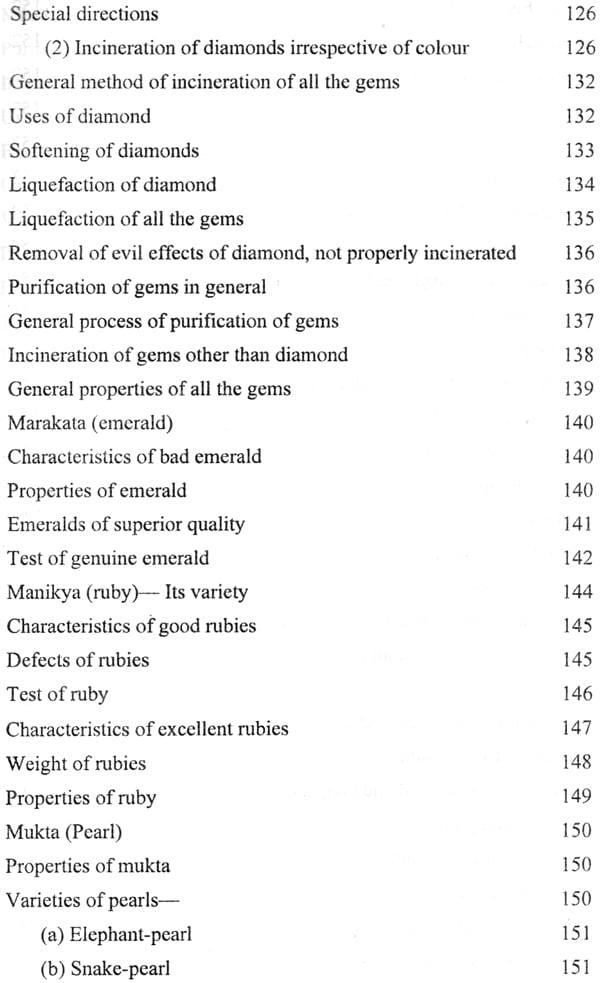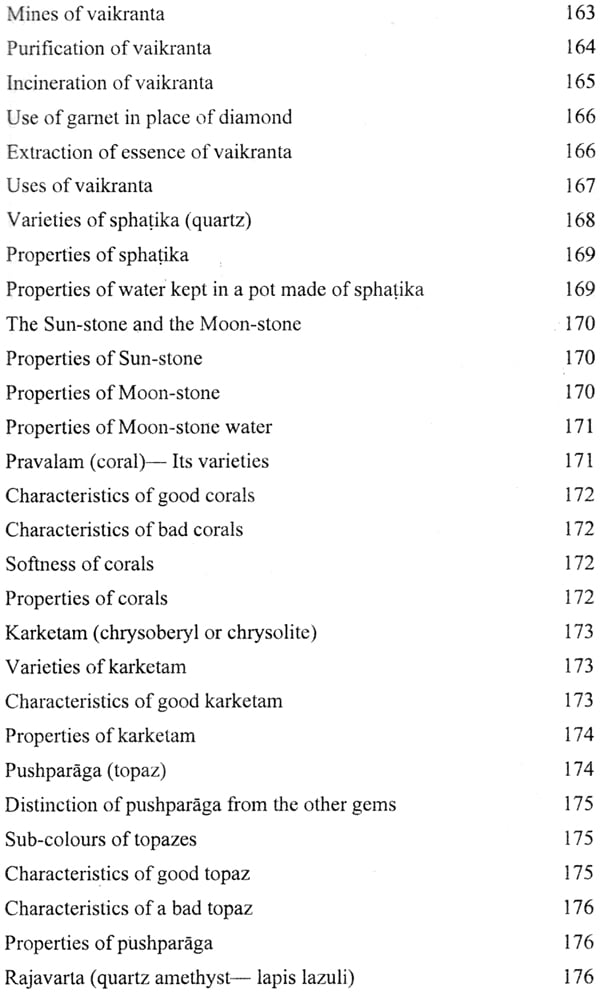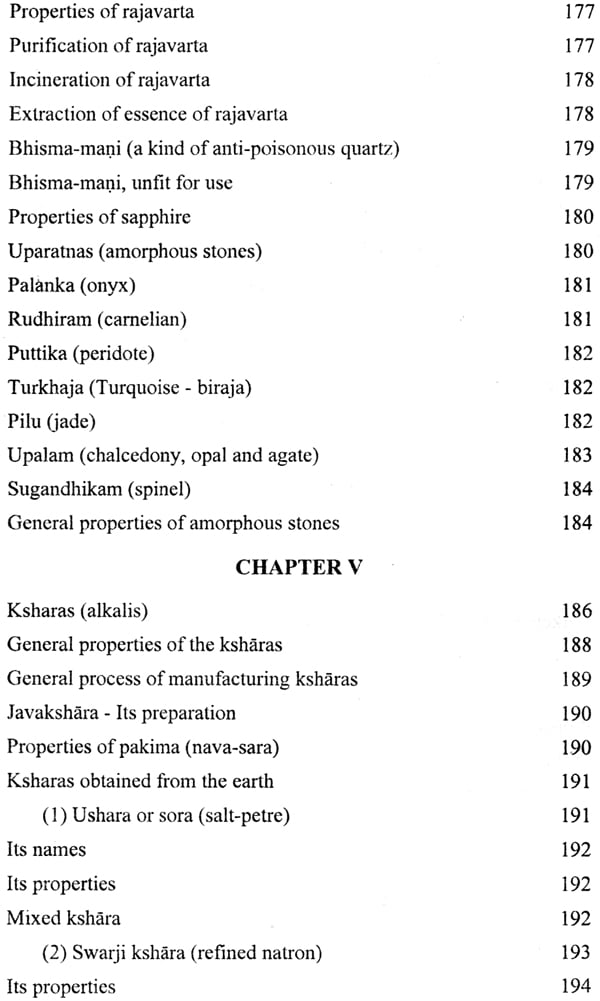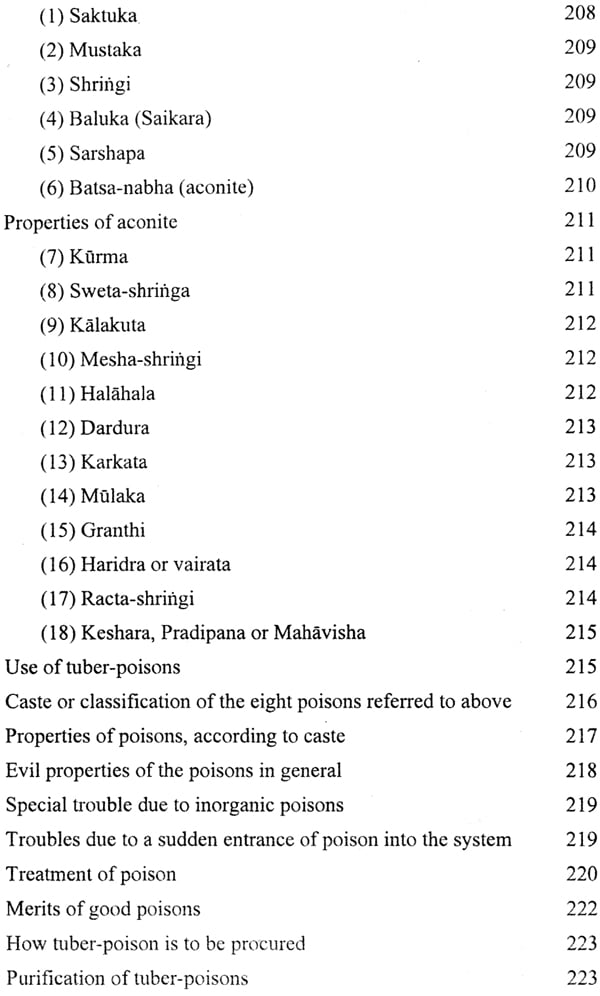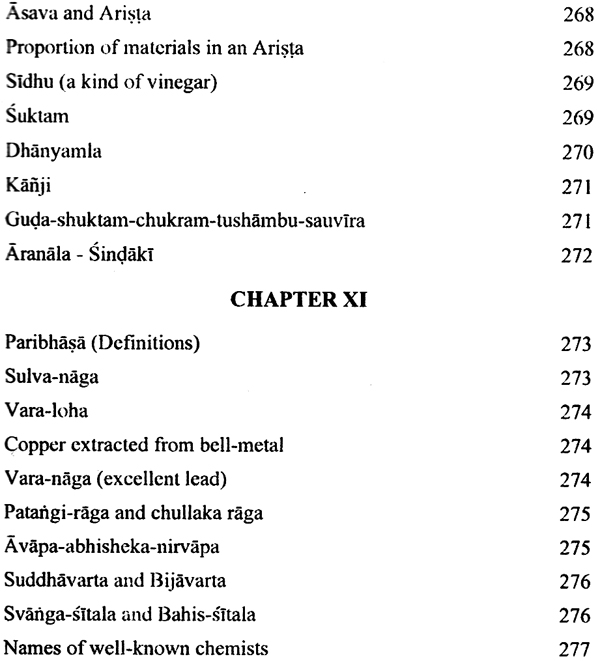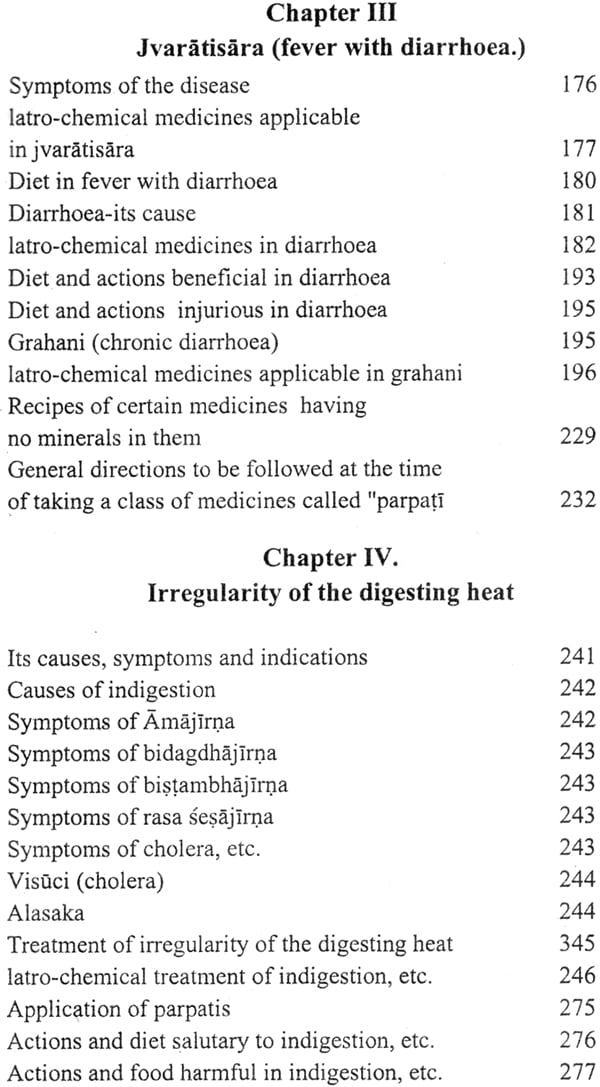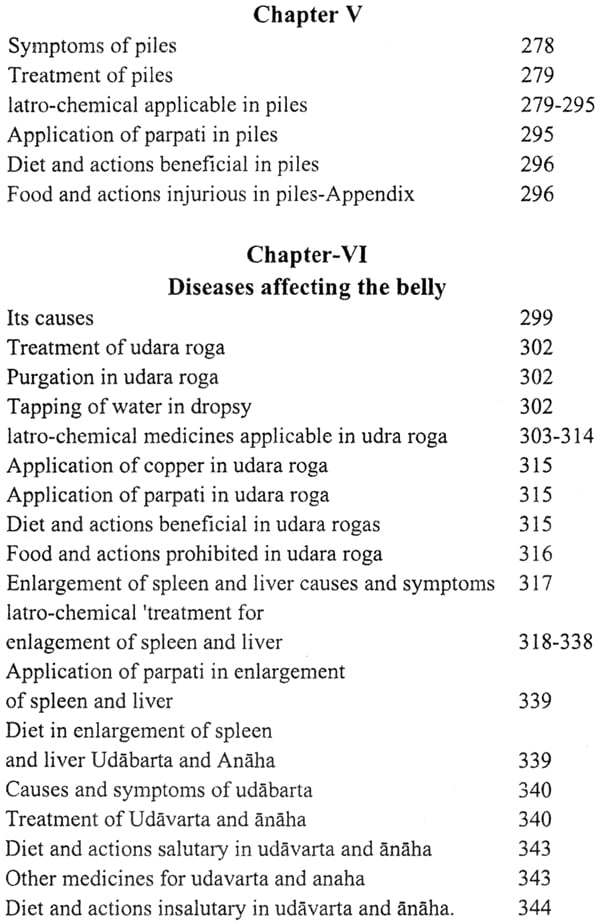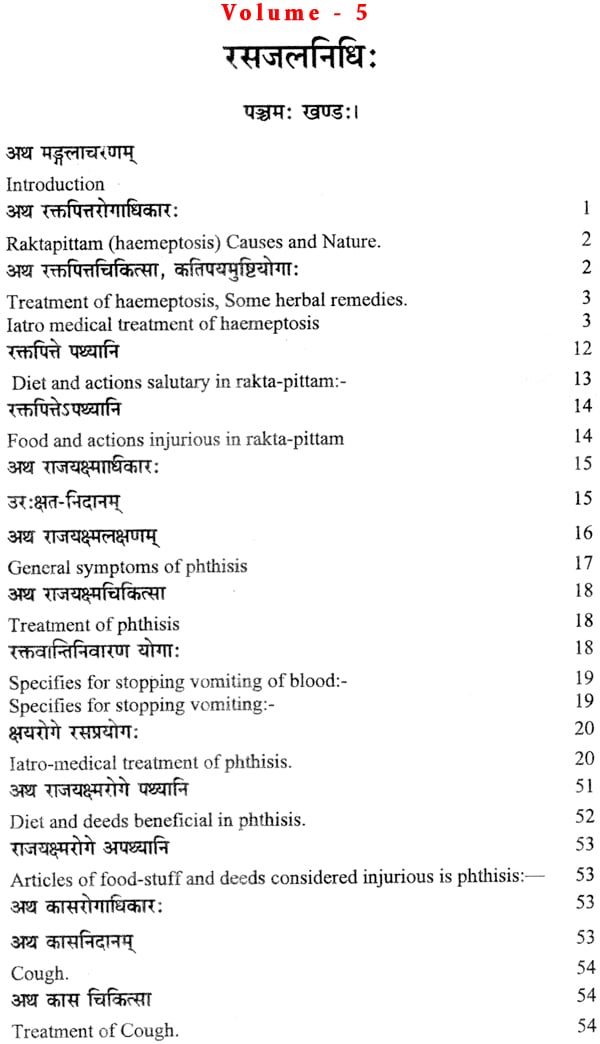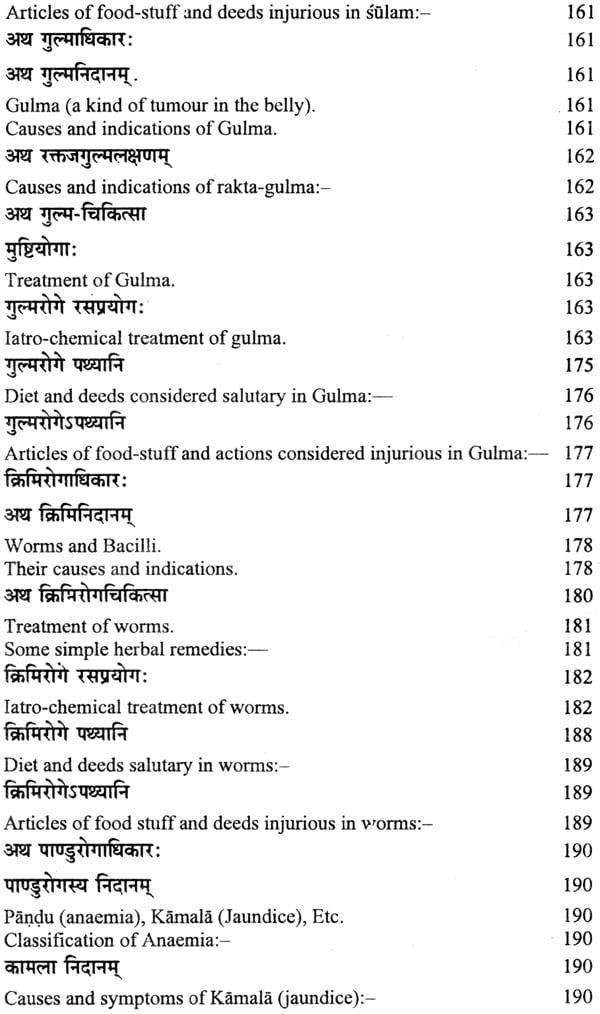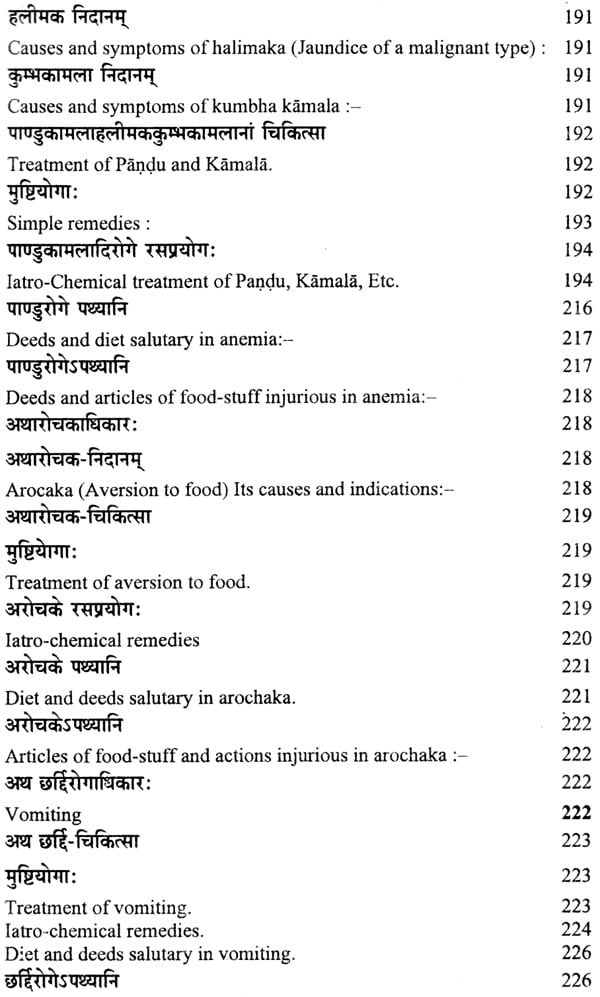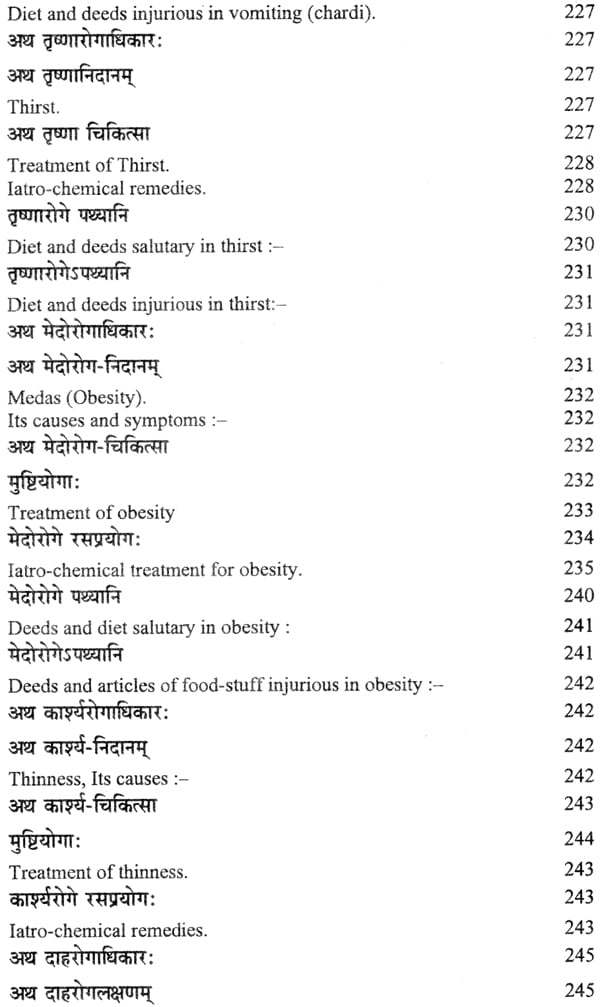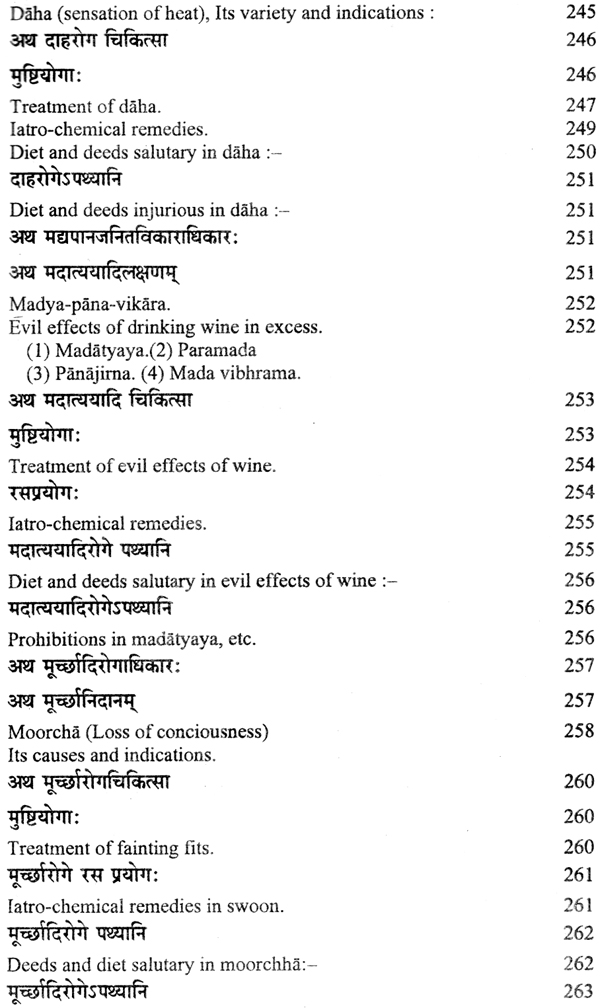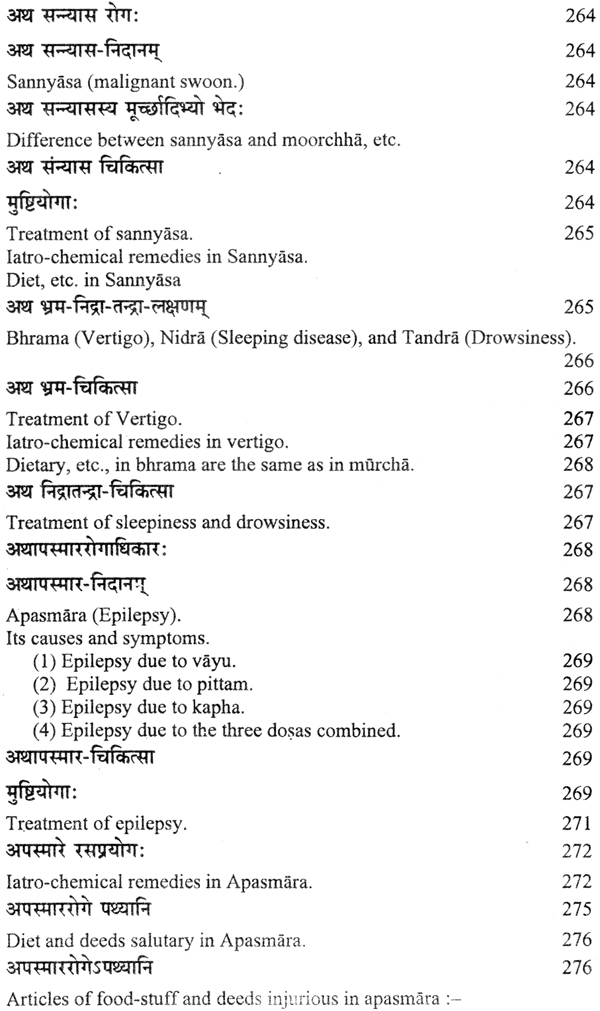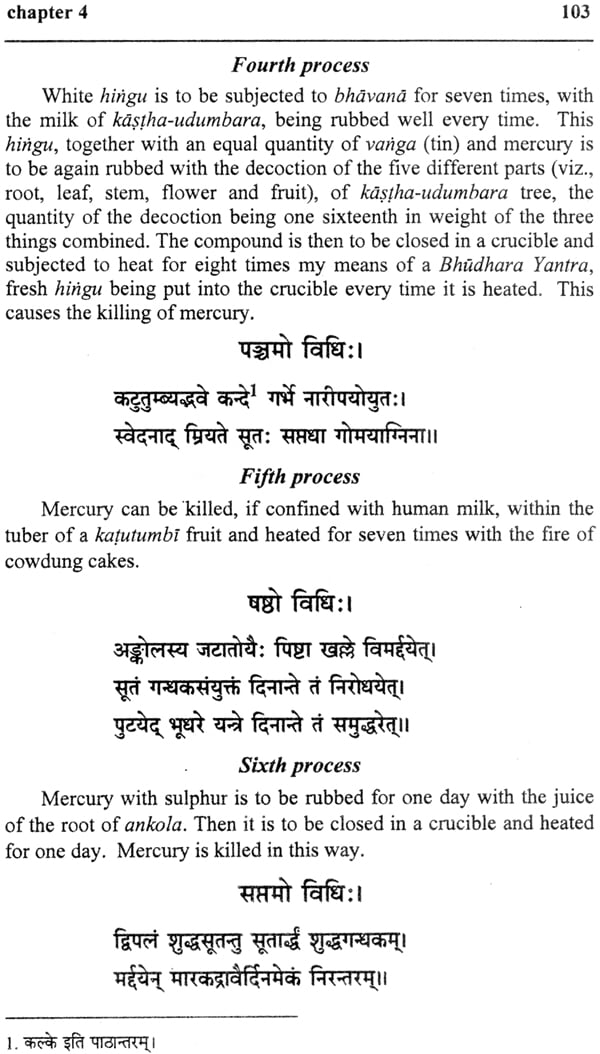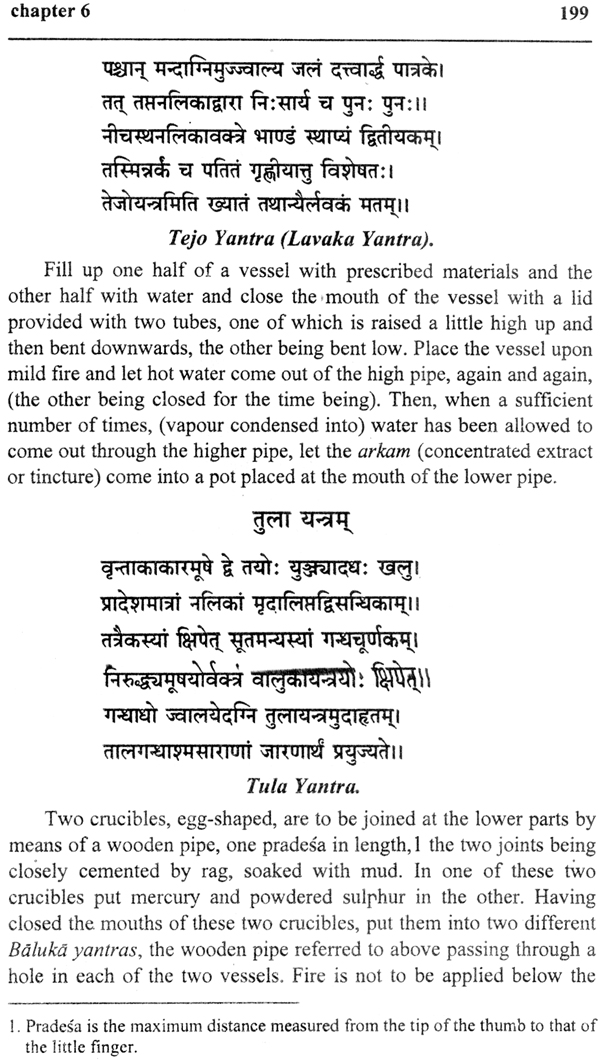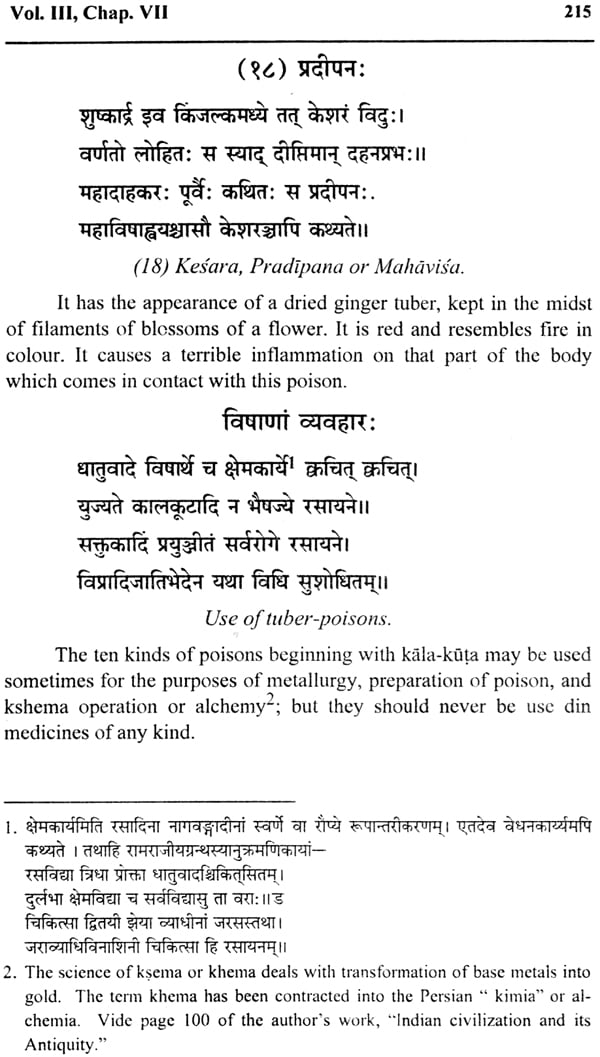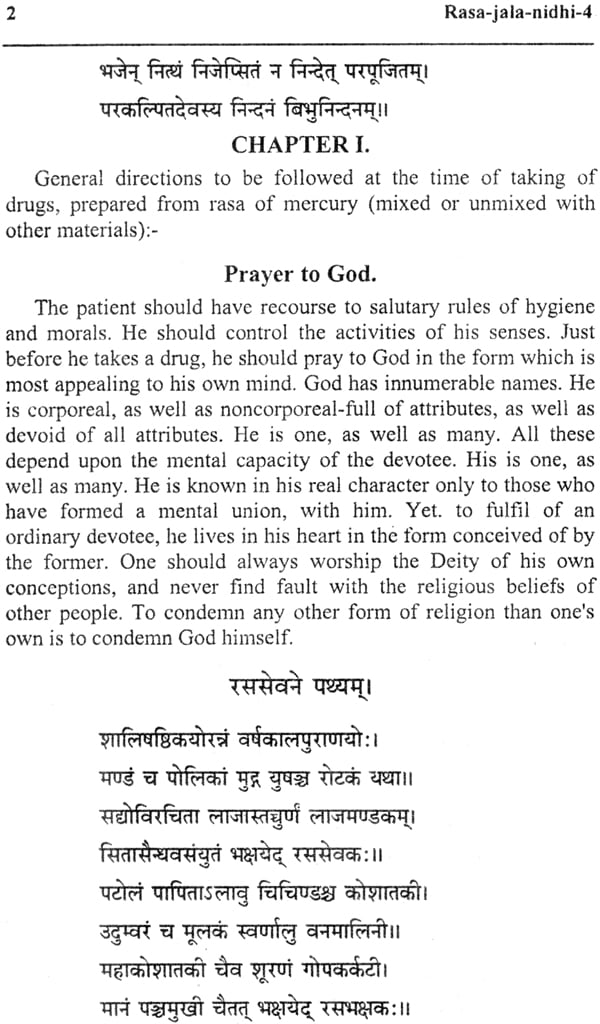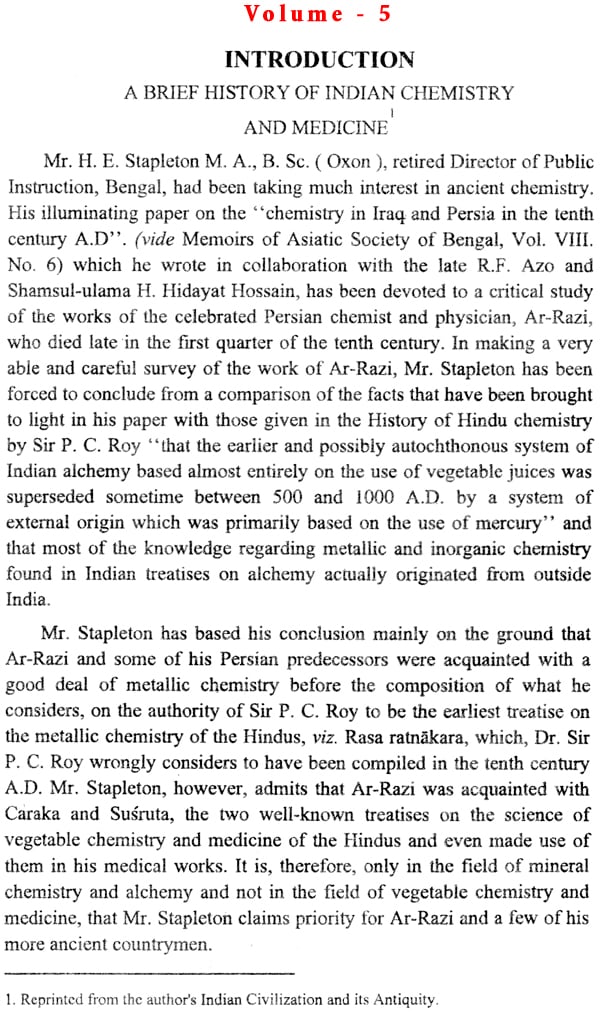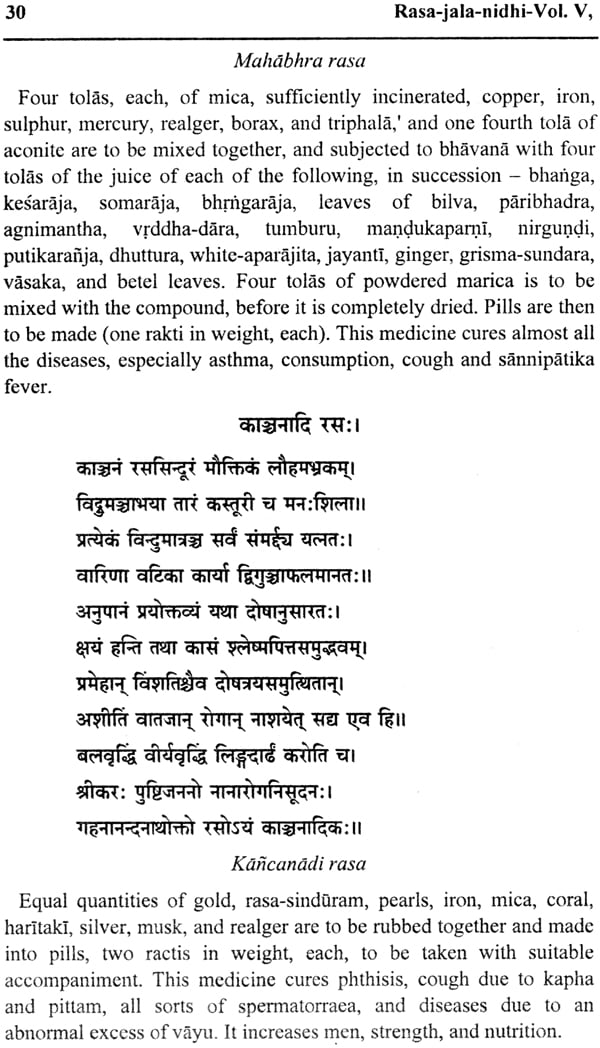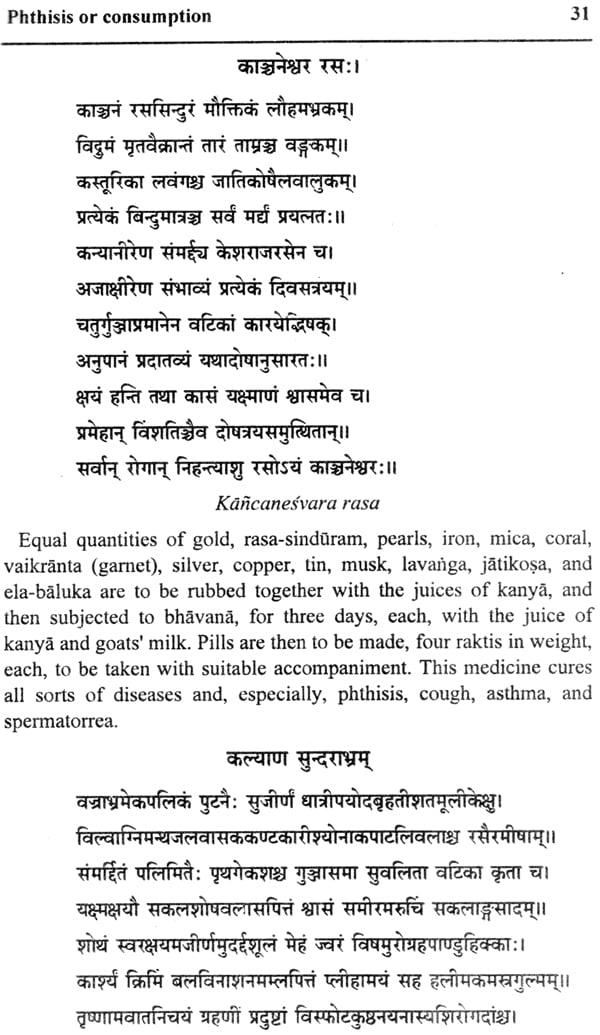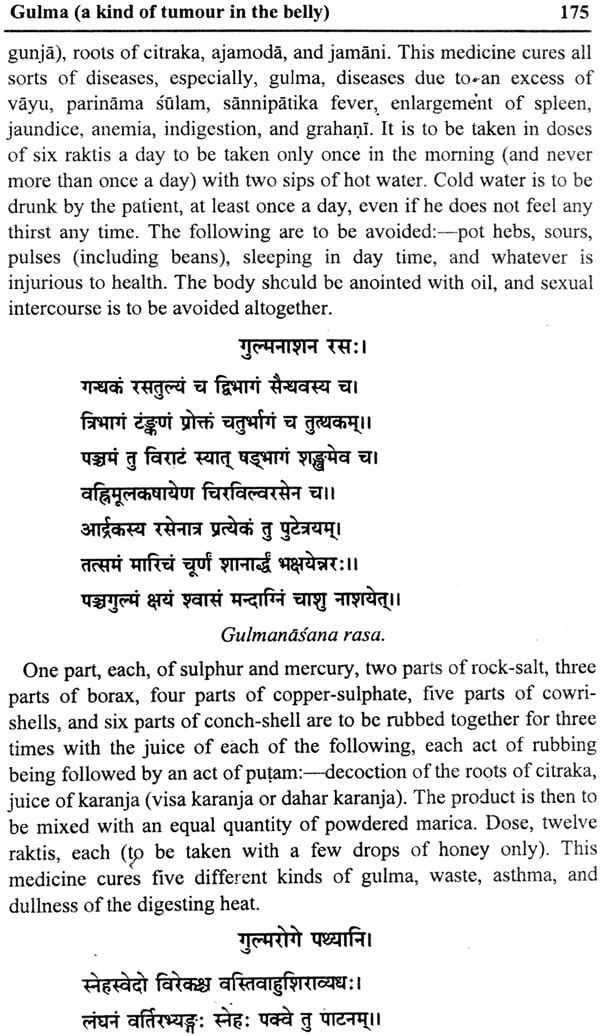
Rasa Jala Nidhi or Ocean of Indian Chemistry and Alchemy (Set of 5 Volumes)
Book Specification
| Item Code: | NAS556 |
| Author: | Kaviraj Bhudeb Mooker Ji |
| Publisher: | Parimal Publication Pvt. Ltd. |
| Language: | Sanskrit Text with English Translation |
| Edition: | 2021 |
| ISBN: | 8171101872 |
| Pages: | 1531 |
| Cover: | HARDCOVER |
| Other Details | 8.50 X 5.50 inch |
| Weight | 2.36 kg |
Book Description
Indian Medical Science - Ayurveda can claim its legitimate place among all other systems of medicine known to the world. But its glory and greatness is due neither to the progress in Surgery or Anatomy as taught by Susruta nor to the excellence of herbal drugs as taught by Caraka but to the exceptional and unique progress which Ayurveda made in the region of medical chemistry.
There were four different schools of treatment of diseases in ancient India, viz., treatments (1) by rasa, i.e. mercury and other metals, (2) by herbs and vegetable drugs, (3) by charms, incantations, etc. and (4) by surgical instruments.
The work is entitled Rasa-jala-nidhi (Ocean of Indian Chemistry of medicine) perhaps on the analogy of Rasérnava Saiva-tantra on the subject of Alchemy. The analogy imparts divinity to the subject itself. The system is of divine origin. It goes back to hoary antiquity, is as old as the Ramayana of Valmiki.
Herodotus, the Greek chronicler testifies that ancient Indians knew a good deal! of chemistry much earlier than the races of the world; that in chemistry of medicine and alchemy the ancient Aryans reached a high degree of perfection and that there were Yogins in India who lived an unusually long life by the use of mercurial preparations.
This book on medical chemistry and Alchemy is a sort of compilation of Sanskrit verses transmitted to us from generation to generation, either through oral tradition or by way of citations occurring in ancient texts on medicine which fortunately for us have escaped the rowdiness of barbarous invaders in the medieval period of Indian history.
Indian medical science — Ayurveda can claim its legitimate place among all other systems of medicine known to the world. But its glory and greatness is due neither to the progress in Surgery or Anatomy as taught by Susruta nor to the excellence of herbal drugs as taught by Caraka but to the exceptional and unique progress which Ayurveda made in the region of medical chemistry.
Of the four system of healing current in India, the system of treatment by mercury and metals (rasa) is the oldest and the most effective. The other three, namely the treatment by herbs and vegetable drugs or that by charms and incantations or that by surgical operations, though very popular and cheaper is less effective and less speedy in recovery. The chemical methods of cure, on the other hand, though costly and difficult is as infallible as the mathematical principles of Pythogorus or Euclid. They are complete systems in themselves. In capable hands they can produce wondrous results. The efficacy of this Science is made manifest inasmuch as boils and carbuncles can be cured by oils and ointments prepared of metals more speedily and effectively than they are by surgical operations.
This book on medical chemistry and Alchemy is a sort of compilation of Sanskrit verses transmitted to us from generation to generation, either through oral tradition or by way of citations occurring in ancient texts on medicine which fortunately for us have escaped the rowdiness of barbarous invaders in the medieval period of Indian history.
The work is entitled Rasa-Jala-nidhi (Ocean of Indian Chemistry of medicine) perhaps on the analogy of Rasdrnava Saiva-tantra on the subject of Alchemy. The analogy imparts divinity to the subject itself. The system is of divine origin. It goes back to hoary antiquity, is as old as the Ramayana of Valmiki. Herodotus, the Greek chronicler testifies that ancient Indians knew a good deal of chemistry much earlier than the races of the world ; that in chemistry of medicine and alchemy the ancient Aryans reached a high of degree of perfection and that there were Yogins in India who lived an unusually long life by the use of mercurial preparations
The present text calls this science to be divine. As divine, its sources are unknown. But as the successful results of its operation are available from reliable practitioners the authenticity of this science becomes on established fact. The results are miraculous but they can be analysed on rational grounds. For each and every substance has a peculiar power interest within which can be multiplied a thousand fold in combination with other substances by a member of processes outlined in ancient treatises. For example, by undergoing certain processes, mercury in union with sulpher acquires potency capable of transforming base metals into gold just as in the case of male and female, the union of semen and blood, by the process of copulation acquires the potency of productivity. To employ Tantric symbolism, mercury is spoken of as Rasa-linga (the phallic form of Siva made of mercury); Sulpher as the Vagina, the private part of the woman; their union as the capsulation process of male & female, representing Siva and Sakti; Rasa-sala as the laboratory’ the sacred alter where the chemical process or copulation (maithuna) is carried on. The tantric analogy which compares the chemical process to the copulation process imparts sanctity to the Science of Chemistry.
The ancient science of metallurgy and alchemy 1s of Indian origin. Ancient Indian god Rudra a symbol of great sexual energy, he is still a Yogin. His body is besmeared with ashes (bhasma) which in fact indicates his proficiency in Bhasma-Vidya.
The Science must have been very popular in ancient India as the country abounded in gold and other metals. People were prosperous and could afford the use of precious articles. But during the period of Mohammedan rule the metals became scarce. There was some difficulty of trade and Commerce too. People in the villages took to the practice of medicines prepared from herbs, since these were cheaper then medicines prepared from metals. In the absence of encouragement and patronization, this Science could not flourish during the period of Mohammedan rule.
This is not much literature on the subject. Stilt a number of valuable works do exist either in the manuscript on printed form. They are worth mentioning and should not be skipped over.
It is an almost universal belief with the educated people of modern times that the world was created only a few thousand years ago and that the oldest civilization cannot date further back than, say, twenty five thousand years before Christ. This assumption would seem to be most absurd to those who have entered into the spirit of the ancient Indian culture, unbiased by any judgement passed by modem scholars on the antiquity of such a culture. The idea of the absolute creation of the Universe out of nothing, at a particular point of time, is more than an ordinary human being can conceive, in as much as it involves an attribution to God of such human characteristics as desire, want and striving for the attainment of an wished for object and thus reduces him to the level of an imperfect and human being. We are, therefore, justified in assuming, without entering upon a philosophical discussion of the subject, that the world is eternal with God and creation means nothing more than the re- construction and re-moulding of matter, which, to a certain extent, takes place every moment. If the world is etermal—and it cannot be otherwise—what justification there is for the assumption that the civilisation of which we can have only a glimpse, through records of a few thousand years only, is the only civilisation known to the world? It is not quite reasonable to assume that an infinite number of movements of civilisation came upon and passed away from the face of the earth? We have, of course, no history of these civilisations and naturally so. Can history have a record of what takes place during an infinite number of years? Modern people have compiled a history for the last few centuries only. Let them proceed in their present method of compilation for a few thousand years more, then they would find the takes to be hopeless. It is physically impossible for a human being to go through a history which contains a detailed survey of all that takes place during, say, 25 thousand years, not to speak of a longer period. We may, therefore, safely assume that the idea of keeping a chronological and detailed history of the world must be given up, after say, -thirty thousand years, if not earlier. What would our historians do then? They would, in all probability, cull out of the past history some of the most important facts and arrange them in a method which was followed by the authors of the Indian Puranas (i.e., ancient records). The Puranas are nothing but records of kings, sages and important events that took place, in some cases, many thousands of years apart from one another. These records have been retained in the Puranas only on account of their Indians realised the futility of keeping a detailed history of a world which is eternal and of their own civilisation which, we have every reason to believe, was the most ancient known to the modern world and had therefore to record ancient events of especial importance in a way which differs from the method followed by the modern historians. That being so, we cannot discard the authenticity of the Puranas and consider them as collection of mythical legends and anecdotes only.
That the Puranas are not based on a mere fiction would find corroboration from independent sources. As for instance, I may refer to the phenomenon of Phallic Worship, the introduction of which into Europe, according to European tradition and mythology, is attributed to Bacche or Baccus of Greek mythology. Now, Bacche or Bacchus, according to Assyrian mythology, was an Indian (see Phallism in Encyclopaedia of Ethics and Religion), the event of whose annual return from India used to be celebrated with a great festival on Mount Ymolus in Lydia. The question which now presents itself is, do we find any reference to this Bacche in our Puranas? Yes we do. In Vamana Purana (Chapter VI) we are told that one of the earliest .advocates of Phallic Worship was Baka, king of "Creetha" (Crete?), who was an Indian Vaisya by caste and was initiated into Phallism by his Indian preceptor, the sage Apastamba. Here, we have got, I think, data sufficient to warrant the identification of the Greek or Assyrian "Indian Baccus" with Baka of the Vamana Purana. Be that what it may, we look upon the Puranas as having a historic basis. They are, with the Vedas and the Tantras, the most ancient literature of the Indians that have been preserved, after countless acts of destruction of books and libraries of ignorant fanatics. The comparative modernness of the language in which the Puranas and the Tantras were written does not justify the conclusion that they are of a comparatively modern origin, in as much as the language of the Tantras and the Puranas have been, for obvious reasons, revised from time to time and new facts introduced into this group of literature.
According to the Puranas, the world js eternal, creation being taken to mean periodical reconstruction after dissolution. The age of the present Kalpa, i.e. of the world from the time of its last reconstruction to the current year is 1955885027 years. This is a figure which is based upon a tradition, as transmitted from generation to generation, through out science, philosophy, history and scriptures.
Rasavidya or Chemistry including Alchemy, began to be cultivated by the ancient Aryas as early as the beginning of the present Kalpa, i.e. more than 1950000000 years back. We have got fragments of two books, the authorship of which has all along been assigned to the great Ramacandra (the hero of Ramayana, an epic composed by the sage Valmiki, who was a contemporary of the hero himself), who learnt the science of chemistry from Kalanatha, a sage living in the forests, during the fourteen years of his exile from his father's dominions. According to the tradition in vogue amongst the siddhas (chemists), King Ramacandra was also called Dandaka Natha, on account of his living in the forest of Dandaka for several years, The books said to have been compiled by this king are named, (1) Rama rdjiya and (2) Rasendra Cintamani. (The latter of these is to be distinguished from Rasa Cintamani, a book compiled by Ananta Deva Suri, not Madananta Deva Suri, as stated erroneously in Dr. Sir P.C. Roy's book). Now, Ramacandra flourished, according to Indian history, at least 900,000 years back. It appears from these fragments that chemistry of medicine reached a very high state of perfection at the time of Rama Candra. The authorship of another book, viz. "Arka Prakasa" has all along been attributed to Ravana, the great king of Lanka, who was killed in battle by king Ramacandra. This "Arka Prakasa" is an excellent booklet containing a comprehensive treatment of all sorts of diseases by means of tinctures only. It contains at least one recipe for the preparation of a mineral acid. That being so, we cannot accept as true the assumption of Dr. Sir P.C. Roy that probably Indians came to lear the preparation of mineral acids from the Portuguese. The fact is that mineral acids are not to be used in medicines prepared from mercury and other metals. That is why the Doctor did not find any reference to these acids in ancient books of Rasa Vidya.
**Contents and Sample Pages**
